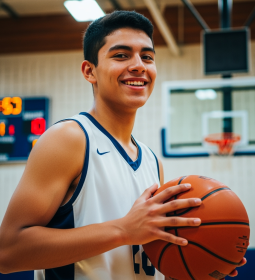The use of ChatGPT in the field of education raises many questions in society. Some consider its use to be an analogue of cheating, while others are convinced that such technologies develop the field, providing effective verification and assimilation of new material. Experts are looking at various ways to use the popular neural network in school and work.
What do users expect from the neural network?
Most students and pupils believe that a neural network will be effective and useful if it can perform the following functions:
- explanation of educational materials in an accessible form and generation of answers to emerging questions;
- assessment of students' knowledge and feedback on the results;
- flexible studying settings that correspond to the level of knowledge and needs of the student;
- interactivity, which involves active interaction with the student.

Experts who have been exploring the possibilities of ChatGPT and other neural networks for a long time have figured out how to make artificial intelligence perform all these tasks. Users are able to combine these tips to create a unique educational program: to do this, you need to register a free account with ChatGPT to be able to apply all the methods in practice.
Beginning of cooperation
The first step in working with ChatGPT is to create a dialog in a standard interface, as everyone else does for information and entertainment. ChatGPT is fluent in the material of school programs and easily answers questions on a wide range of topics. However, the standard chatbot responses are aimed at an adult audience (age 30-40 years) and may not be quite suitable for schoolchildren. Therefore, it is important to make the language of communication more accessible to children. This can be done using key phrases: "as simple as possible", "in simple words", "as for a 5-year-old", "without complex terms", "visually", and so on.
ChatGPT can explain the material starting with the basics or building on a specific chapter of the textbook using simple language. However, the size of the text you enter is limited to about 1500 words.
Interactive Assistant
A standard conversation with ChatGPT may not be interactive. Teachers and parents have to introduce special phrases to properly direct the conversation, which is not always convenient and effective.
To create an interactive learning environment for students, you can set up ChatGPT through a special Custom Instructions window: click on the button with three dots next to the profile and select Custom instructions from the drop-down list. In the window that opens, you need to activate the function for new chats, enter your instructions in the second window, taking into account the limit of 1500 characters, and save the changes.
All-in-one assistant
Using ChatGPT as a learning assistant opens up new perspectives in the educational field, despite certain limitations. Although ChatGPT has different abilities in different subjects, although it may be less effective in fields such as math, physics, fine arts, or physical education, its potential in education is great. In doing so, the model may encounter accuracy issues in matters related to historical dates or literary citations.

The potential of ChatGPT in education is constantly expanding with improvements in the development of language models. The ability to effectively set up a learning assistant can open up new opportunities for its integration into various areas: the creation of Telegram bots or web services that will help schoolchildren and students learn better.
Validation of works and tests
The inclusion of a neural network in the classroom requires an individual approach to its configuration. One of the key aspects is knowledge testing. For this purpose, ChatGPT can be programmed to act as a mentor, for example, as a virtual examiner or a teacher capable of issuing and grading learning assignments. This approach allows you to turn ChatGPT into a tool that independently formulates tasks and analyzes students' answers. For example, the user can configure ChatGPT to create exercises based on Bloom's taxonomy methodology: tasks to memorize facts or to develop critical thinking skills. Students can then submit the results of these sessions for analysis and evaluation.
The effectiveness and attractiveness of such a methodology depends on the setup of ChatGPT and a creative approach to the learning process.
To each his own ChatGPT
Personalizing learning with ChatGPT is also possible. To do this, the student can use the following methods:
- determining the learning context: you can configure ChatGPT to work with students of different levels, taking into account their individual characteristics and abilities;
- Placement testing: ChatGPT can diagnose knowledge, for example, by assessing the level of proficiency in a language or other subjects. This will help to more accurately adapt to the needs of the student.
To achieve the best results in personalizing learning, it is necessary to develop and implement instructions that will allow the bot to respond more accurately to the requests and needs of students. This may require additional studying in special courses on working with prompts and setting up chatbots.
Is it right to use artificial intelligence in education?
Issues of ethics in the use of ChatGPT in education deserve attention. There are well-deserved fears that students may use it as a cheating machine. However, properly applying ChatGPT in teacher-supervised education can be a useful tool, especially for students at different levels of academic performance.

Artificial intelligence has the potential to change the education system beyond recognition, providing an interactive and individualized approach to learning. It is possible, for example, to create a simulator where the material and methods of testing it are adapted to the needs of each student. The main thing is to learn how to use this neural network correctly and give it precise and specific queries. And don't overuse it, of course!













